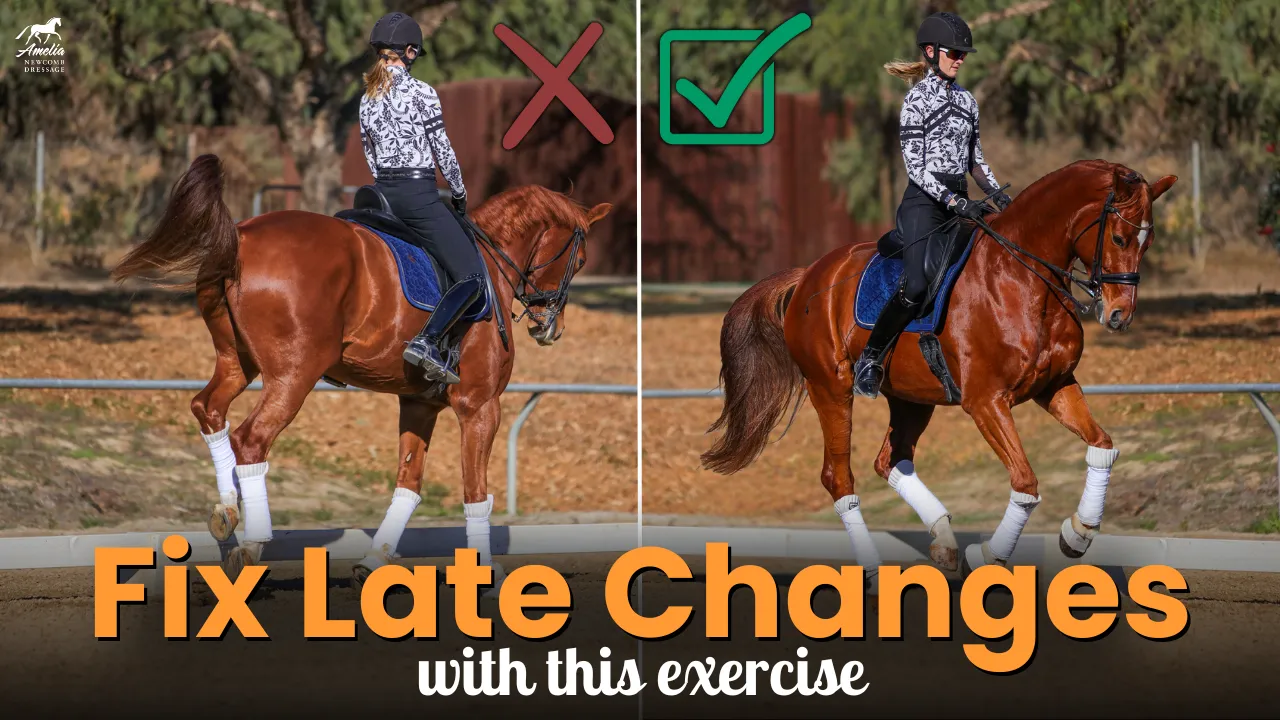10 meter circles at the canter are a big challenge for both horse and rider. In order to do them well, they require bend, collection, impulsion, and engagement! A couple for weeks ago, I asked people to send in video clips of something they were struggling with in their riding. Sue sent me a clip and here’s what she said:
“I will be 67 this year and this is my 6th year riding…a late comer. I part board this wonderful, sweet guy, Domino who will be 20! He’s a former jumper. He is sound and very happy.
My issue: Domino is (and from his owner always has been) a low energy, laid-back guy who will give as much as you ask and you have to keep asking. Presently I’m working on being able to canter 10m circles. As I work to correct my position (seat, shoulders, hands) he will use any change as an opportunity to transition downward. Any feedback from you about what I can be doing to encourage him and what you see that is hindering him being forward would be appreciated. I have a very supportive coach, who you hear in the video, who has encouraged me to submit this and welcomes comments.
Thank you for all you offer those of us who are passionate about this sport!!”
Here are some suggestions to help Sue with the 10 meter circles at the canter!
Bend – Domino does not bend correctly in his body on the small circle. He falls in on the inside shoulder and out with the hind leg. Do some 10 meter circles first at the trot and work on the bend. Be sure that your outside leg is behind the girth to prevent the horse from swinging out with the outside hind leg. Remember that the horse must bend uniformly in the body from poll to tail – not just in the neck!
Look for your touch points- In the video Sue sent, her instructor is reminding her about looking up for her touch points for a 10 meter circle. Looking up not only helps you ride the circle accurately, it also helps get your body in the correct position with your shoulders turning in the direction of the circle and your weight on the inside seat bone!
Think of riding a pentagon instead of a circle if you are having trouble turning. This will help you to actually get the horse to turn, and then give them a quick release when they turn. This will also help with maintaining the energy and impulsion on the circle.
Get the horse more uphill in the canter – Practice canter trot canter transitions to get the horse more uphill balanced AND more forward! I noticed that with Sue’s horse, he particularly falls onto the forehand in the canter trot transition so be sure to maintain the uphill balance and engagement also in the downward transition!
I hope these tips are helpful both to Sue and to you!
Happy Riding!












































